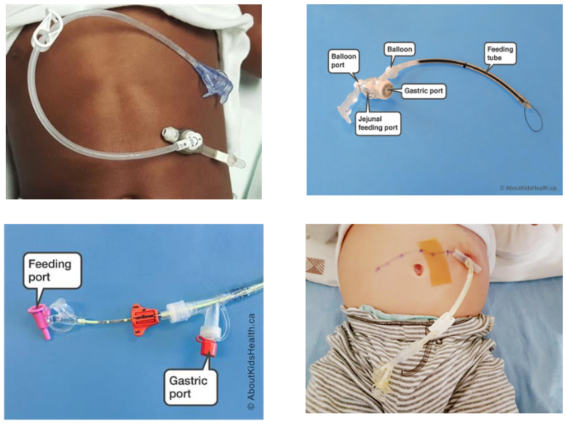HINT: How do I vent a G-tube to manage fullness and bloating?
Connected Care Quick Hits are up to date and evidence based recommendations for the care of children with medical complexity & technology dependence, from hospital to home.
HINT: How do I vent a G-tube to manage fullness and bloating?
SITUATION:
This week’s QuickHit! comes from questions from community/home care providers and families regarding the best way to vent a G-tube to release excess gas, including how to properly use a Farrel Valve Bag as a method of venting.
BACKGROUND:
Gastrostomy tubes (G tubes) are feeding devices that provide liquid nutrition, medication and other fluids directly into the stomach. Certain G/GJ tubes, such as Combination Gastrostomy/Jejunostomy (GJ) tubes provide fluids, nutrition, and medication directly to the small intestine (jejunum) as well as have a separate port that allows access to the stomach. You can use both a G tube or the gastric port of a Combination GJ tube to vent a child's stomach.
Venting a G tube means letting gas from a child's stomach out through the end of the G tube. Venting the stomach can remove excess air from the stomach to relieve fullness and bloating. Venting a child's G tube during or prior to feeds may also help with pain, discomfort or reflux associated with feeds. It may be scheduled as part of the child's daily routine or done on a PRN (as needed) basis.
ASSESSMENT:
When caring for a child in community/home care, partner with the child’s family caregiver to determine if venting is a part of their daily routine, if the child may benefit from their G tube being vented, and to discuss which venting method would be most appropriate for the child based on their needs.
Factors to consider when choosing a method of venting may be:
the mode of feeding (bolus vs continuous)
the type of tube the child has
the equipment the family has available
what method works best for the child
Whether routine or prn, assessments to make before venting may include:
inspecting the shape and size of the abdomen
palpation for discomfort/masses
auscultation for bowel sounds
monitoring for tolerance of the feed
assessing signs of discomfort and pain
Constipation can also be a factor in a child experiencing bloating and fullness.
Considerations:
Vent only from the stomach, never the jejunum. Any G tube can be vented. Combination G/GJ tubes are vented from the Gastric Port only. With a Combination G/GJ tube, it is possible to feed into the jejunum port while venting from the G-port in the stomach.
For G tubes, when the plan is to vent, be sure to vent before starting a feed or giving medications. If the child's tube requires an extension set, this must be attached when you vent the tube. Applying gentle massage to the child’s stomach may assist to move air out via the G port.
Most children will have a care plan that includes intermittent (scheduled or prn) venting and some will require continuous venting for marked feeding intolerance. Always monitor for potential excessive losses of gastric fluid volumes, electrolytes and/or digestive enzymes.
RECOMMENDATION:
For this consult, Connected Care confirmed that families and community/home care providers are taught multiple methods of how to vent the G port of a feeding tube, as certain techniques work better for some children, than others:
Click here for step by step instructions for each method including a video on venting
Key Reminders
For continued bloating, discomfort, or signs of feeding intolerance unrelieved by venting, partner with the child's family caregiver on next steps that may include contacting the G tube Nurse Specialist, the child's Point of Care team, or seeking medical attention.















